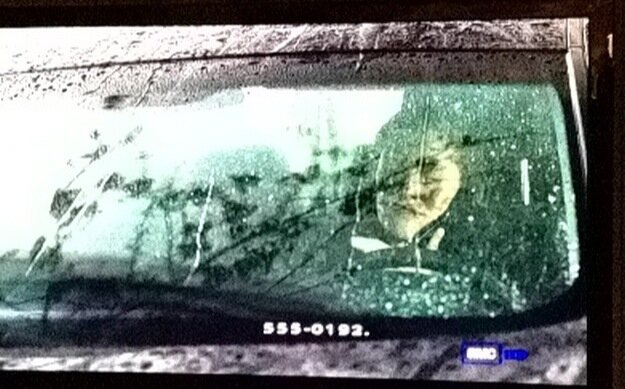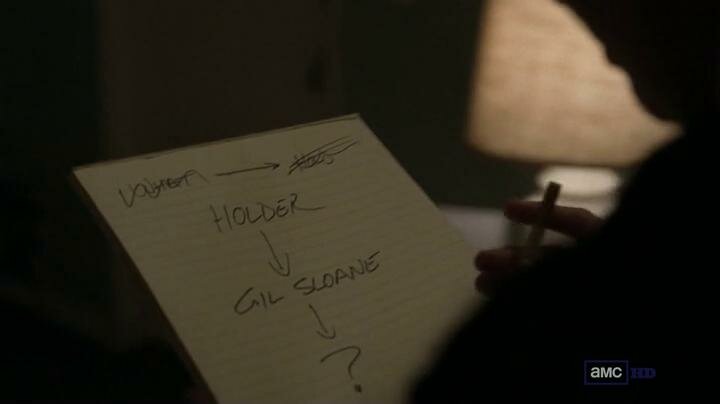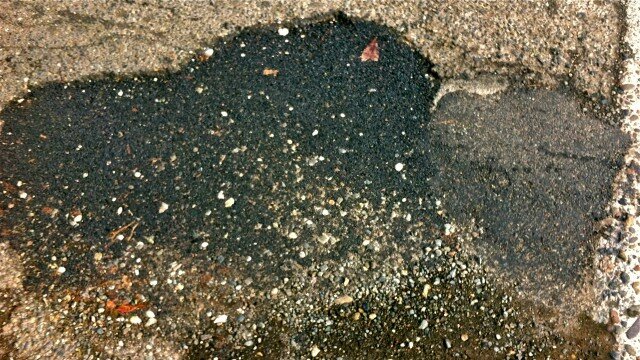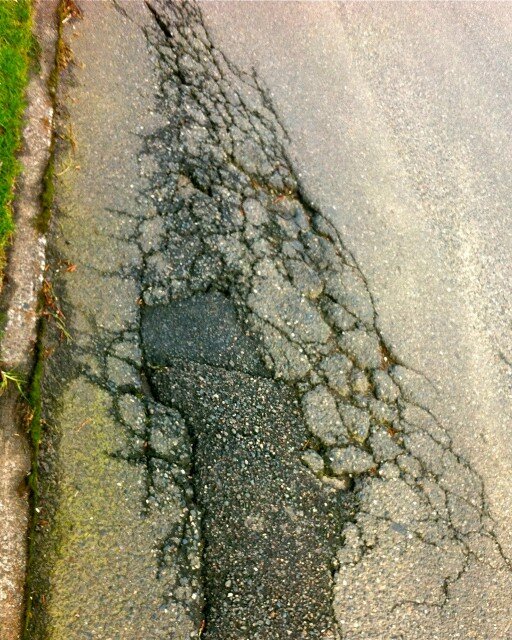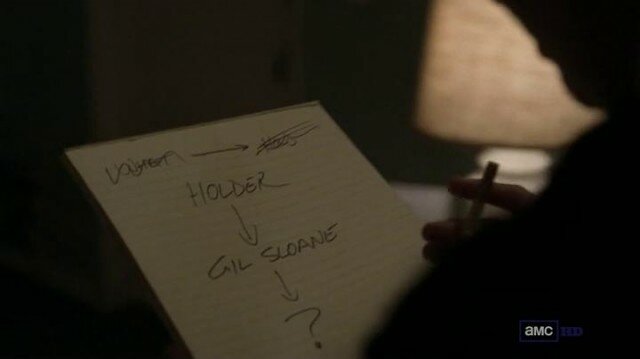
Oh no, this show again. When last we left off (June 2011, which is only Day Thirteen on The Killing‘s calendar), Rosie Larsen’s murder remained unsolved due to myriad macguffins, red herrings, double-crosses, and psych-outs–and television critics, the Twitterverse, and what few fans were left were pissed off at being jerked around and vowed that the show was as dead to them as Rosie.
I was hoping that in the interim AMC would think better of it and cancel The Killing entirely, but here we are, with a two-hour premiere (“Reflections”/”My Lucky Day”) to ease us right back into television hell. The episode starts with Detective Linden looking as unhappy about having to do all this again as I am. She tells her son Jack that they’ll be staying in Seattle, so hopefully we won’t have to deal with any more of the will-she-or-won’t-she-move-to-California subplot that wasted so much time last season. RIP, Fiance Rick, we hardly knew ye.
Meanwhile, mayoral candidate Darren Richmond is in bad shape after Belko shot him (and killed his own mother too, before turning the gun on himself at the police station). There’s an unnecessary, unintentionally funny moment as the EMTs are wheeling Richmond to the ambulance, when somehow the stretcher tips over and Richmond’s body falls on the ground. Maybe that’s why he’s now paralyzed from the waist down, not Belko’s bullet. Good thing the councilman is receiving good care and terrible bedside manner at the Lake Washington Medical Center.
Linden continues being a bad mother, dropping Jack off at a random church, leaving him alone at night to continue her investigation, and feeding him a healthy dinner of vending machine potato chips. Speaking of bad moms, Mitch has run away from home, abandoning the Larsen family, while her sister, who’s acting as Substitute Mommy, sends one of the little boys out to the car to fetch her cigarettes. Classy. Just wait till everyone finds out you were a secret Backpage.com Beau Soleil escort, Terry!
Campaign aide Jamie tells Gwen he’s a “garden variety asexual,” and Gwen returns the favor by telling Jamie (and eventually Linden) that Richmond wasn’t with her the night of Rosie’s murder, but later showed up soaking wet at the Tacoma B&B where they were staying. I suppose that’s as good a reason as any to go to Tacoma, so Linden investigates further, ultimately discovering that Richmond couldn’t have killed Rosie because he was too busy trying to kill himself that night by jumping off a Tacoma bridge.
So who killed Rosie Larsen? Now that we’ve taken an entire season plus one episode to rule out Darren Richmond, obvs there’s a CONSPIRACY AFOOT. It definitely involves Lt. Gil Sloane, another cop and a member of Holder’s Narcotics Anonymous group, who performed a “secure erase hard drive” in record time before heading to the Mayor’s now-shuttered Waterfront Project to meet with Mayor’s assistant and yell at him. After finally learning to trust Holder, Linden now thinks he’s dirty, thanks to those faked traffic cam photos, but it turns out Holder was just a rube. And he can’t be that bad, considering he kept Rosie Larsen’s real backpack and turned in his own to the crime lab, only for them to return faked results.
Linden goes back to the station and finds a new police lieutenant in charge. Oh hey, it’s Duck Phillips! Maybe some of our other old Mad Men friends will show up and join the cast, like dear departed Sal and neighborhood boy Glen and Zombie Miss Blankenship. I’d much rather be watching a fever dream Mad Men spinoff. Oh well, only eleven more hours of this season of The Killing to go.
So many cliffhangers: Will Holder and Linden go back to being BFFs? Will Jack recognize the Japanimation character from Rosie’s super 8 film, since we saw him reading a manga in this episode? Will the famed Seattle Polish mob find Rosie’s real killer? Will Darren Richmond’s sister and Mitch check their voicemail? The suspense is KILLING me.
And before we go, let’s take a look at the close attention to detail that has made The Killing so very famous. ENHANCE:
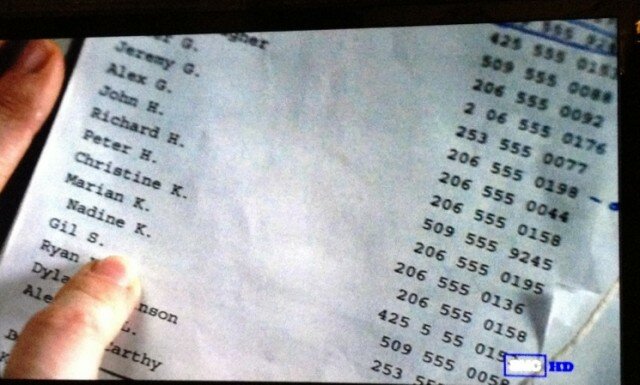
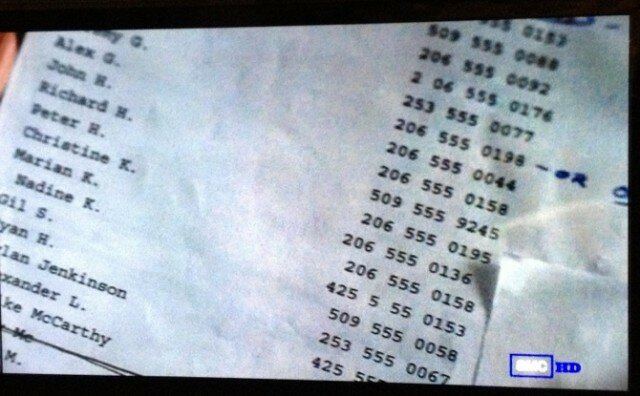
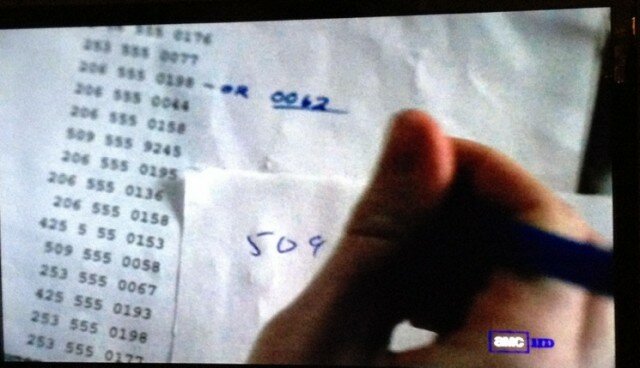
And in the very next scene, when Linden is relaying the phone number in order to track down Gil Sloane’s address:
